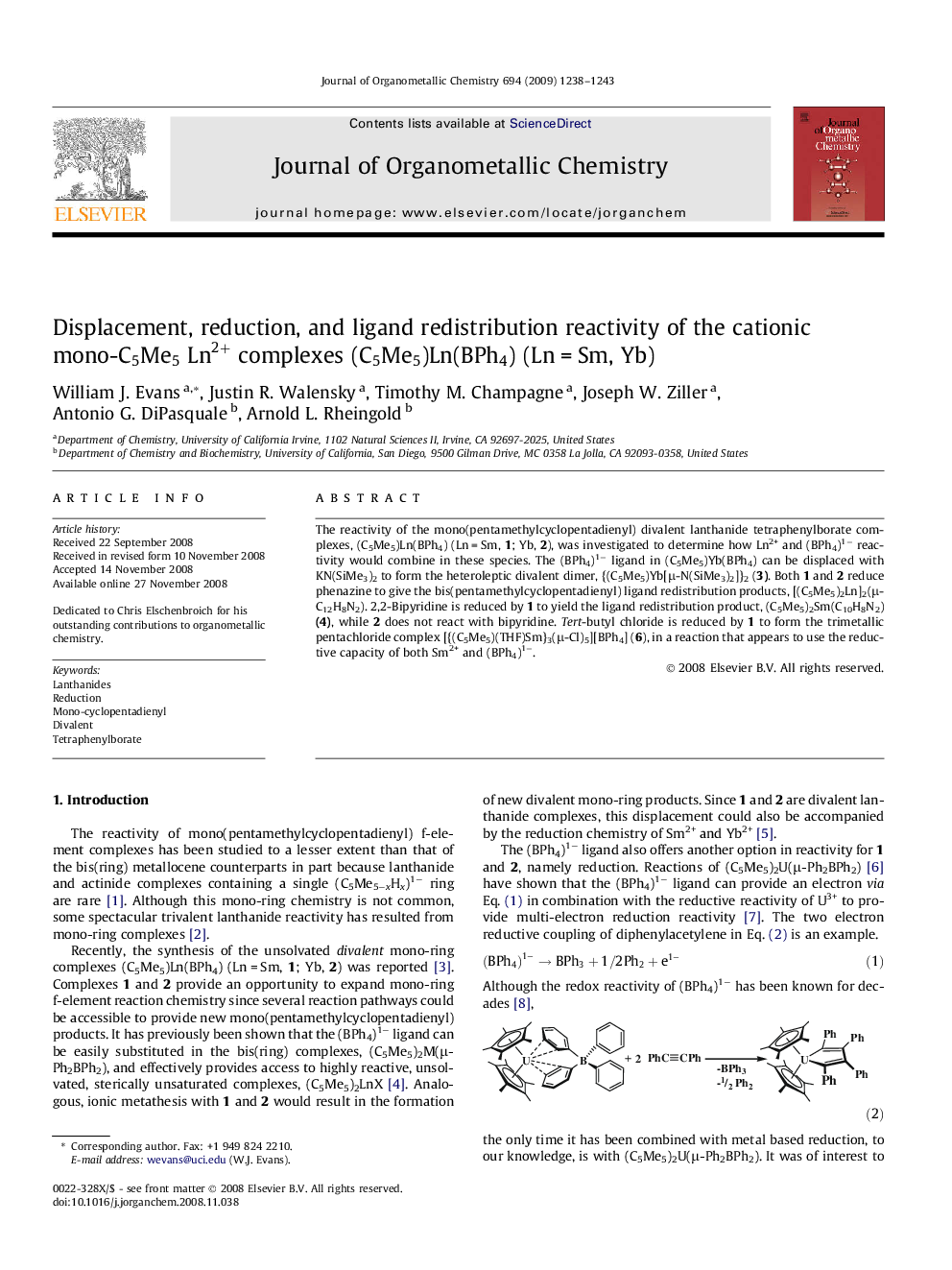| Article ID | Journal | Published Year | Pages | File Type |
|---|---|---|---|---|
| 1324677 | Journal of Organometallic Chemistry | 2009 | 6 Pages |
The reactivity of the mono(pentamethylcyclopentadienyl) divalent lanthanide tetraphenylborate complexes, (C5Me5)Ln(BPh4) (Ln = Sm, 1; Yb, 2), was investigated to determine how Ln2+ and (BPh4)1− reactivity would combine in these species. The (BPh4)1− ligand in (C5Me5)Yb(BPh4) can be displaced with KN(SiMe3)2 to form the heteroleptic divalent dimer, {(C5Me5)Yb[μ-N(SiMe3)2]}2 (3). Both 1 and 2 reduce phenazine to give the bis(pentamethylcyclopentadienyl) ligand redistribution products, [(C5Me5)2Ln]2(μ-C12H8N2). 2,2-Bipyridine is reduced by 1 to yield the ligand redistribution product, (C5Me5)2Sm(C10H8N2) (4), while 2 does not react with bipyridine. Tert-butyl chloride is reduced by 1 to form the trimetallic pentachloride complex [{(C5Me5)(THF)Sm}3(μ-Cl)5][BPh4] (6), in a reaction that appears to use the reductive capacity of both Sm2+ and (BPh4)1−.
Graphical abstractBoth the metal and the (BPh4)1− ion are reactive in (C5Me5)Ln(BPh4) complexes (Ln = Sm, Yb) generating a variety of product classes depending on the specific metal and substrate.Figure optionsDownload full-size imageDownload as PowerPoint slide
